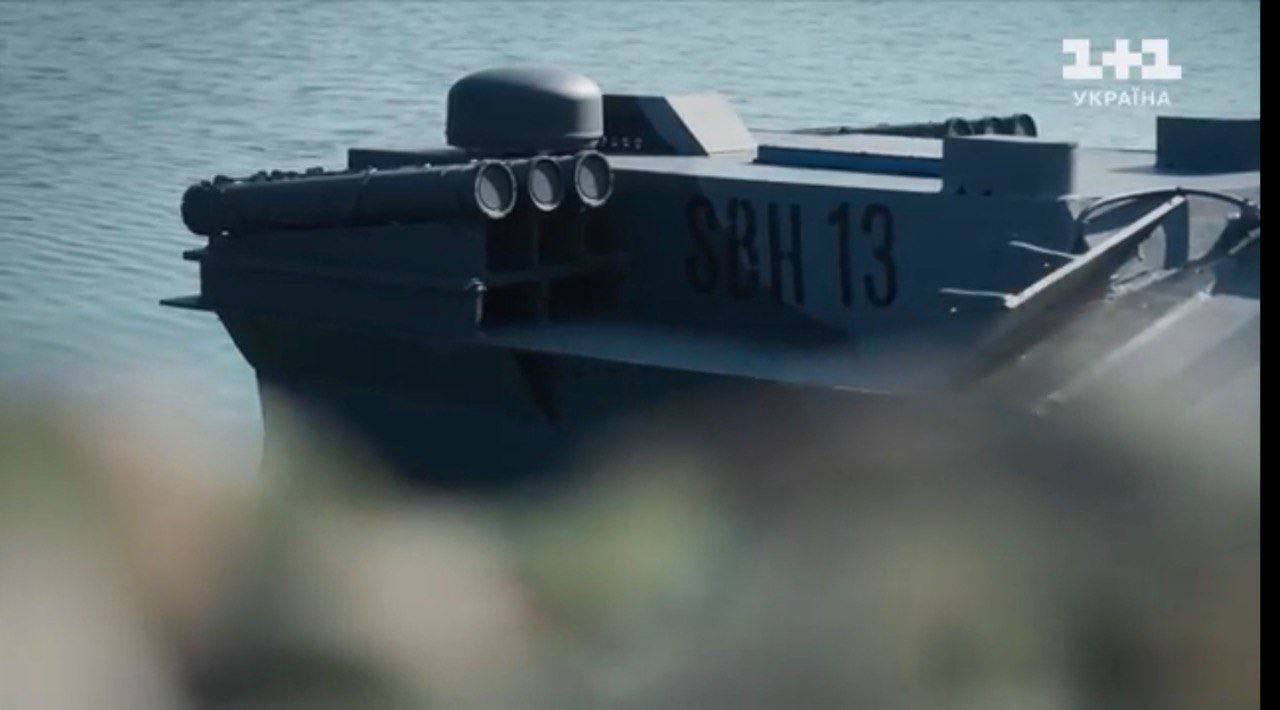Ukraine’s kamikaze drone boats are now firing missiles, according to pictures and videos emerging on its social media. The Sea Baby heavy suicide Unmanned Surface Vessel (USV) has been seen carrying four Schmel thermobaric rocket launchers in its rear towards the engine. Ukraine’s State Security and Intelligence Service (SBU) has billed it as a qualitative and technological evolution that threatens Russia’s Black Sea Fleet (BSF) around Crimea.
Kyiv has consistently introduced a series of kamikaze USVs in the unmanned war it initiated in the Black Sea port of Sevastopol in late 2022, scoring some notable tactical successes when it began combining it with aerial strikes. It has so far severely damaged two landing ships and destroyed the BSF headquarters in Sevastopol (with air-launched Storm Shadow cruise missiles).
Recently, it even claimed to have sunk a 370-foot-long landing ship, Novocherkassk, with the Russian Ministry of Defense (RuMoD) subsequently claiming it shot down two Ukrainian Su-24 jets that conducted the strike.
But the installation of rocket launchers does mark a credible advancement, which, although failed to cause significant damage to the Russian fleet, exacerbates the menace. Russian warships will now be forced to destroy the USVs much earlier, at least before they align themselves in the line of sight for firing the unguided rockets.
Sea Baby Is Ukraine’s Most Versatile USV
Interestingly, the EurAsian Times had reported how Ukrainian officials envisaged a far bigger and more diverse role for the Sea Baby USV, the largest, possibly most capable, and advanced boat.
The boat rose to fame after a July 17 strike on the Crimean bridge, the success of which can be said to have informed Ukrainian designers of plans for adding more features.

Quoting Ukrainian designers and SBU officials, reports from the country say that the Sea Baby is “not only a naval kamikaze drone” but also a “modular, multipurpose platform on which various types of remotely controlled weapons are mounted.”
It is not clear if the Shmel launchers have been installed on existing units of the Sea Baby USV or a new batch. Two other one-way attack USVs in the SBU arsenal are the Mamai and the Magura V5.
Sea Baby Can Fire Rockets
Grabs from a news segment on the Ukrainian television channel TCH showed six tubes (three on either side of its rear, above the engine). Subsequent footage from the Sea Baby’s electro-optical system showed the vessel’s front portion and rockets streaking from some distance behind it, and then some of the shots just from around it aligned with the boat’s position.
It indicates that the Sea Baby in question is firing the rockets, and possibly, with another of the same boat – to explain the launches around it in the direction it is pointed.
A report in Ukrainska Pravda, quoting Ukrainian Navy and SBU officials, said, “There is already a flamethrower system on drones, which allows you to conduct a naval battle in the literal sense. The video shows Ukrainian SBU drones firing at Russian boats that jumped out of one of the Crimean military ports to sink the drones. But the drones, instead of running away, turned around and opened fire in return.” This gives context to the video described above.
It added that the “new generation” of the USVs has “increased explosive payload, from 108 to 850 kilograms,” the “best” communication systems each cost over $300,000, the body made of radar-evading material, and “many other innovative solutions.”
Ukraine’s Naval ‘Thinking’
The RPO-A Shmel is a Russian-origin shoulder-fired thermobaric rocket launcher. The ones on the Sea Baby could possibly be its Ukrainian-produced analog, RPV-16.
Thermobaric warheads explode by absorbing and burning the surrounding oxygen, producing a far hotter, incendiary blast and a visible ‘shockwave’ that can destroy strong structures. Both weapons are described as “flamethrowers.”
It is unclear if the firing shown in the video is from a previous or the latest attack and whether it destroyed any Russian targets. Neither Ukrainian nor Russian Telegram channels reveal anything on this front. Being an unguided rocket makes it wildly inaccurate. But the Ukrainian objective could be to save the remote operator the effort of coming close and physically striking a Russian naval vessel, which gives gunners onboard the ship enough time to destroy the USV.
Firing rockets from a distance still has some chance of hitting the intended target from a distance. If one does land on a ship, the powerful thermobaric blast can set off secondary explosions of fuel or ammunition aboard the ship.
- The author can be reached at satamp@gmail.com
- Follow EurAsian Times on Google News




